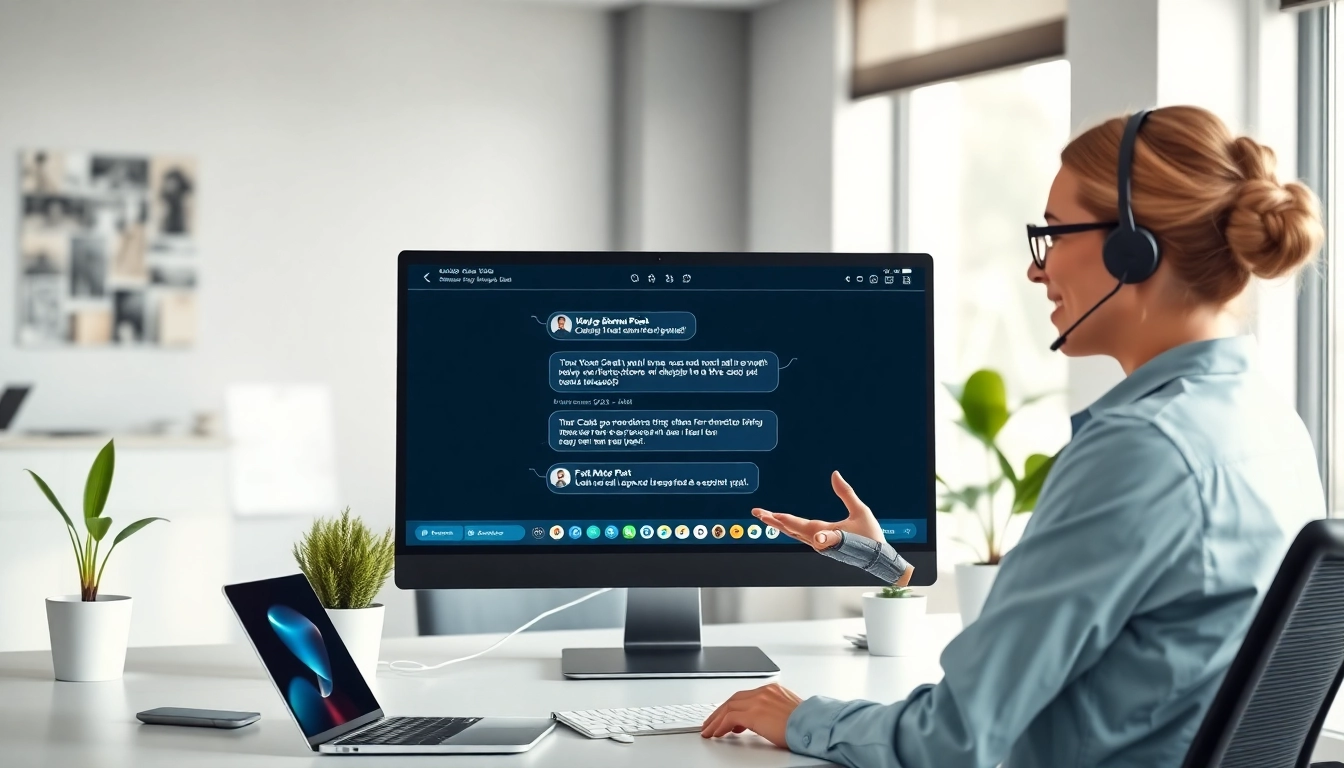Understanding the Importance of a Chatbot for Website Engagement
As digital interactions continue to evolve, businesses are prioritizing innovative ways to connect with their audience. One such innovation is the utilization of a chatbot for website engagement. These automated systems offer a seamless approach to enhance communication, provide instant support, and drive user engagement, leading to improved user satisfaction and conversion rates.
1. What is a Chatbot?
A chatbot is a software application designed to conduct online conversations via text or voice interactions. They can simulate human-like conversation using artificial intelligence or rule-based responses. Chatbots can be programmed to answer questions, provide recommendations, solve problems, and engage users in various ways, enhancing the overall online experience for visitors.
2. Key Benefits of Implementing a Chatbot
Implementing a chatbot on your website can provide numerous benefits:
- 24/7 Availability: Chatbots can interact with customers at any time of day, ensuring that help is always accessible.
- Improved Response Times: Automated systems can respond to user inquiries almost instantly, increasing user satisfaction.
- Cost Efficiency: Reduces the need for large customer service teams, saving businesses on personnel costs.
- Data Collection: Chatbots can gather valuable data about user preferences and behaviors, allowing for targeted marketing efforts.
- Scalability: They can handle thousands of inquiries simultaneously, making them ideal during peak times.
3. How a Chatbot Enhances User Experience
Chatbots are essential to enhancing user experience on websites. Their ability to provide instant answers to common questions improves user satisfaction significantly. Moreover, they guide users through website functionalities, suggest products based on inquiries, and even assist in the purchasing process, promoting a streamlined and engaging experience.
Choosing the Right Type of Chatbot for Your Website
1. AI vs. Rule-Based Chatbots
When selecting a chatbot for your website, one of the foundational decisions is choosing between an AI-powered chatbot and a rule-based system. AI chatbots utilize machine learning to understand natural language and evolve from user interactions. In contrast, rule-based chatbots follow predetermined scripts and can often struggle with complex inquiries. Understanding your business needs will help in selecting the most suitable chatbot type for enhancing user interactions.
2. Common Use Cases for Chatbots
Chatbots can serve various purposes, including but not limited to:
- Customer Support: Answering FAQs and troubleshooting issues.
- Lead Generation: Engaging users to capture contact details and qualify leads.
- Shopping Assistance: Helping customers find products and offering personalized recommendations.
- Appointment Scheduling: Allowing users to book appointments directly via chat.
- Feedback Collection: Gathering customer feedback for product and service improvements.
3. Key Features to Look For
When selecting a chatbot, consider including features such as:
- Natural Language Processing (NLP): For understanding and processing human language effectively.
- Customizable Responses: The ability to tailor conversations based on user interactions and business needs.
- Multi-Channel Support: Integration capabilities across various platforms like social media and messaging apps.
- Analytics Tools: To measure interaction success and improve future engagement strategies.
How to Effectively Implement a Chatbot on Your Website
1. Step-by-Step Installation Guide
Implementing a chatbot involves several steps:
- Define Objectives: Determine what you want the chatbot to achieve.
- Choose a Platform: Select the chatbot software that aligns with your business needs.
- Design the Conversational Flow: Map out how you want interactions to proceed, including handling different user intents.
- Integrate the Chatbot: Follow the specific platform instructions to add the chatbot code to your website.
- Test and Launch: Conduct thorough testing to ensure accurate performance before going live.
2. Best Practices for Integration
Ensure a smooth chatbot integration by following these best practices:
- Keep It Simple: Avoid overly complicated scripts that may frustrate users.
- Continuously Update: Regularly refresh the chatbot’s knowledge base and capabilities based on user feedback and inquiries.
- Provide Human Back-Up: Ensure users can easily reach a human agent if the chatbot cannot resolve their issue.
- Promote Awareness: Make users aware of the chatbot’s functionalities and how it can assist them.
3. Customizing Your Chatbot’s Personality
A chatbot’s personality can directly influence user engagement. Consider the tone, language, and style of communication that best align with your brand. Would you prefer a professional tone for a corporate website or a friendly and casual style for a retail site? Customized personalities not only enhance the user experience but also build brand recognition and loyalty.
Measuring Success: Metrics to Track for Your Chatbot
1. Analyzing User Interaction Data
To understand how well your chatbot is performing, analyze user interaction data. Look at how many users engage with the chatbot and what types of inquiries are most common. This data will provide insights into the effectiveness of your chatbot and guide improvements.
2. Key Performance Indicators (KPIs)
While analyzing data, focus on critical KPIs such as:
- Engagement Rate: The percentage of website visitors who interact with the chatbot.
- Resolution Rate: The percentage of queries resolved by the chatbot without needing human assistance.
- User Satisfaction Score: Feedback gathered from users after interacting with the chatbot.
- Conversion Rate: The rate at which interactions lead to desired actions such as sign-ups or purchases.
3. Improving Chatbot Performance Over Time
Refining your chatbot’s performance should be an ongoing process. Regularly review user feedback and interaction data to identify areas for improvement. Introduce new functionalities based on changing user needs and stay ahead of competitors by consistently innovating your chatbot’s capabilities.
Future Trends in Chatbots for Websites
1. The Rise of Conversational Marketing
The future of marketing is leaning heavily towards conversational experiences. Chatbots will play a crucial role in facilitating these interactions, allowing brands to engage users in real-time conversations that drive personalized marketing efforts. By integrating chatbots into broader marketing strategies, businesses can optimize engagement and conversion rates.
2. Innovations in AI and Machine Learning
As AI technology advances, so will chatbot capabilities. Future chatbots will likely become more adept at understanding complex queries, handling multi-turn dialogues, and delivering personalized interactions based on vast datasets. Continuous development in AI and machine learning will enable chatbots to provide more accurate responses and meaningful interactions.
3. Predictions for Chatbot Development
As we look to the future, we can expect to see:
- Increased Integration: Enhanced integration with other customer service tools and platforms.
- Voice-Based Input: An uptick in the use of voice commands via chatbots, especially with the rise of smart speakers.
- Improved Personalization: Chatbots will leverage user data more effectively to tailor conversations and recommendations.
- Greater AI Transparency: Users will demand more transparency about how chatbots handle their data, prompting ethical considerations in design choices.



